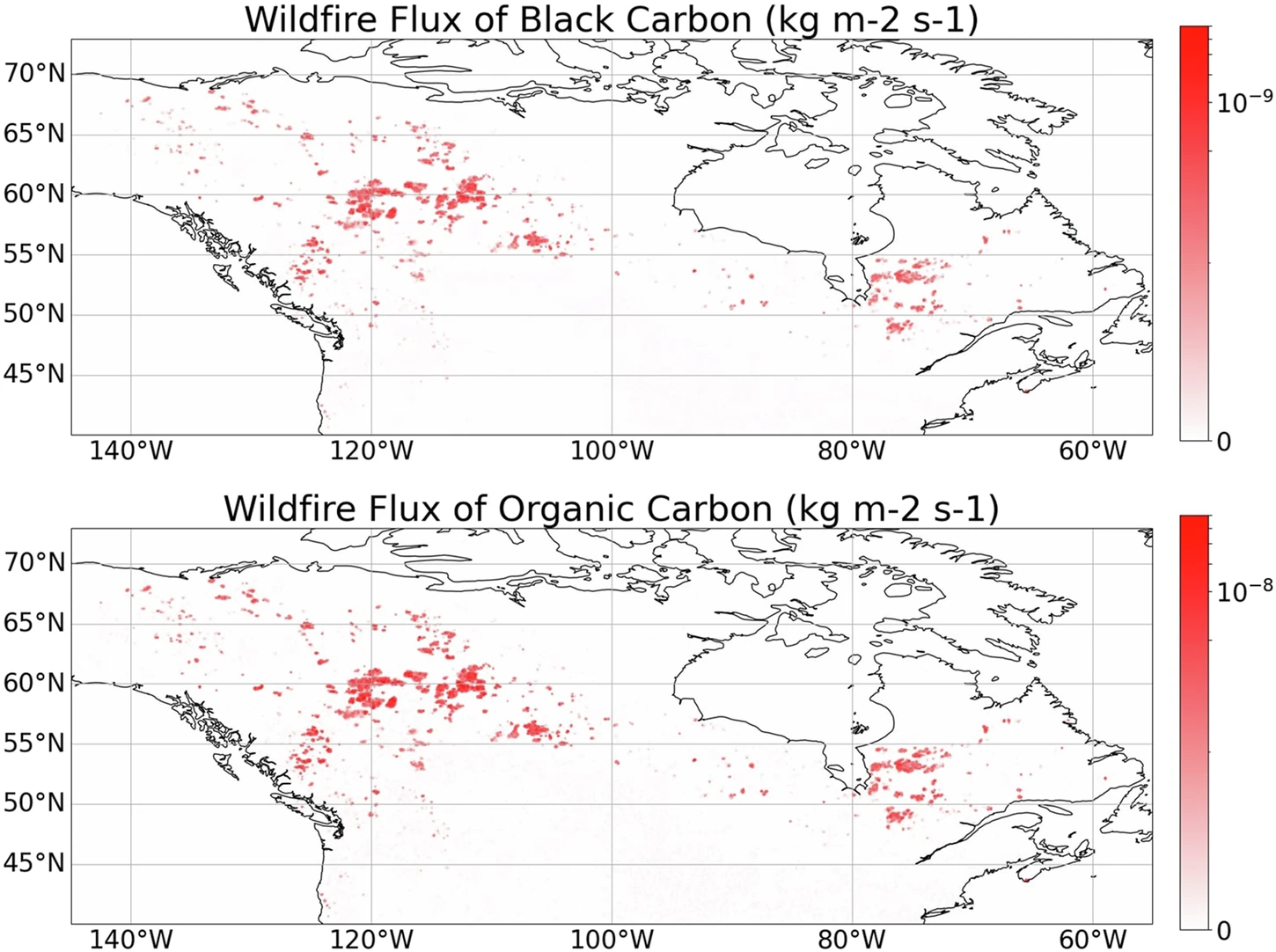Climate effects of the 2023 Canadian wildfires
The 2023 Canadian wildfires marked an unprecedented environmental event, with around 5% of Canada’s forested land burned, seven times higher than the long-term average burnt area. These fires produced record-breaking emissions, releasing vast amounts of carbon dioxide, aerosols, and reactive gases that severely affected both air quality and the climate. Such conditions were driven by exceptionally warm and dry weather, which is linked to ongoing climate change. Projections suggest that these fire-prone conditions could become commonplace by mid-century, especially in high-latitude regions that are warming faster than the global average.
To assess the atmospheric consequences of this extreme fire season, Roșu et al used the EC-Earth3 Earth system model to simulate conditions with and without wildfire emissions. The model indicated widespread increases in aerosol concentrations across the Northern Hemisphere, leading to a measurable cooling of surface air temperatures. This cooling resulted from both the direct interaction of aerosols with radiation and their indirect influence through cloud formation and circulation changes. Remarkably, these effects extended well beyond Canada, reaching as far as Eastern Siberia, and persisted for several months.
The findings underscore the importance of accounting for wildfire-driven aerosols and aerosol-cloud interactions in climate and weather models. Extreme fire events can generate lasting hemispheric temperature shifts, emphasizing the need for improved modelling strategies to better anticipate their role in future climate and weather dynamics.

